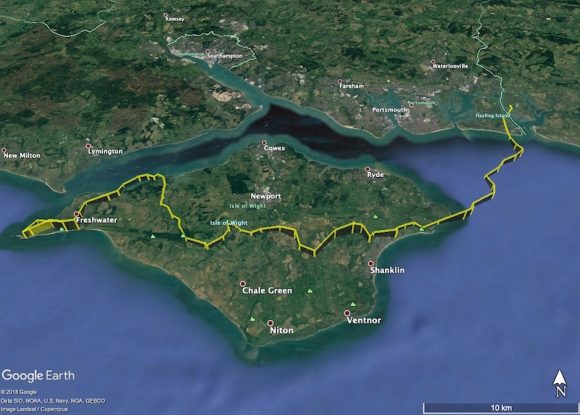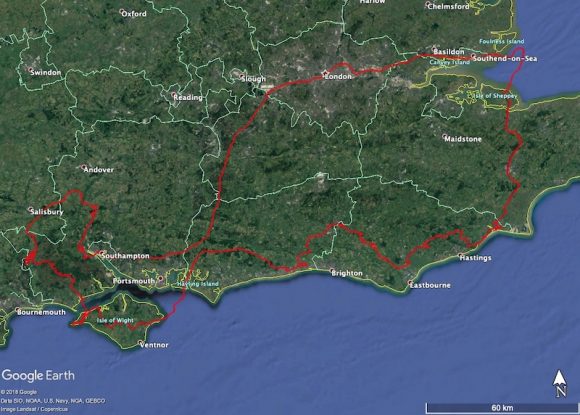He’s done it! After an extraordinary eight day, 680 km flight around southern England, Culver made it back to the Isle of Wight today. What’s more, he made landfall over Culver Cliff – the site of the last known breeding White-tailed Eagles in southern England in 1780; the place he’s named after.

Culver on Thorney Island this morning. Photo by Wez Smith.
This morning Culver remained close to his roost site on Thorney Island until just after 09:30. While he was there he was seen by Wez Smith, who sent us this great photo of Culver.
Wez saw Culver head-off south-west and, sure enough, at 10:05 he began crossing the Solent. The 15 km crossing took him 40 minutes to complete. As he passed over the famous cliffs he was flying at an altitude of 222 metres.

Very appropriately Culver made landfall on the Isle of Wight over Culver Cliff
Once on the Island, Culver showed now sign of letting up. He continued on a westerly heading and at 13:08 was just south of Yarmouth at an altitude of 379 metres and then, twenty minutes later, he was circling over another of the Isle of Wight’s famous landmarks: the Needles. He then turned back east over Tennyson Down – the exact spot he had set-off from eight days earlier. What an incredible flight for a young White-tailed Eagle.

Culver’s flight to the Isle of Wight from Thorney Island
It will be fascinating to see what Culver does next. Will he remain on the Isle of Wight, like the other five young eagles, or go wandering again? Watch this space…

Culver flew 680 km in eight days on his extraordinary flight
Please support us
This is a start of a journey for the young White-tailed Eagles and for the project team – the start of a five year project by Forestry England and the Roy Dennis Wildlife Foundation to restore White-tailed Eagles as a breeding species on the Isle of Wight and along the Channel coasts. We will have regular updates, maps and photos on all six eagles although no maps for those that have stayed close to the release site. Please check in to find news of them here.
We would be delighted if you would like to join us on these journeys and very grateful if you wished to help by donating to contribute to the costs of satellite tracking the eagles and other elements of the project. For more information, click here, or simply click donate below and select White-tailed Eagle project when prompted. With sincere thanks.


















